SteelSeries Rival 650 review: Solving the wireless-mouse problem with 15-minute charging - jonessuccart

IDG / Hayden Dingman

At a Glance
Skilful's Evaluation
Pros
- Gets 10 hours of charge in only 15 proceedings
- Comfortable and attractive design
- Eradicable weight system provides plenty of options
Cons
- Heavier than some might like
- Expensive
- Thirdly thumb button is runty and awkwardly placed
Our Verdict
With the Rival 650's intrinsical fast charging and eye-catching flavor, SteelSeries has finally produced its first off moldiness-have mouse.
Best Prices Today

$100.38
Free
SteelSeries has all-night had a soft spot in its peripherals lineup: mice. Great headsets, good keyboards, mediocre mice. Both were to a fault buttoned-down, others too daring, but none of the ones we've looked at concluded the years have qualified atomic number 3 must-haves.
That changes with the current Competitor 650 ($120 connected Virago). Finally, SteelSeries has a mouse that both nails the fundamentals and packs a solid gimmick.
Note: This review is part of our roundupof best g aming mice. Go there for details happening competing products and how we tested them.
Heavy modal
Lashkar-e-Toiba's start with the design, because SteelSeries has improved by leaps and bounds in that compliments. SteelSeries headsets have always faced nervy-thinking esthetics, just its mice have looked more like something you'd find in an berth. Scores of grayish planes, affair-over-form materials, and then on.
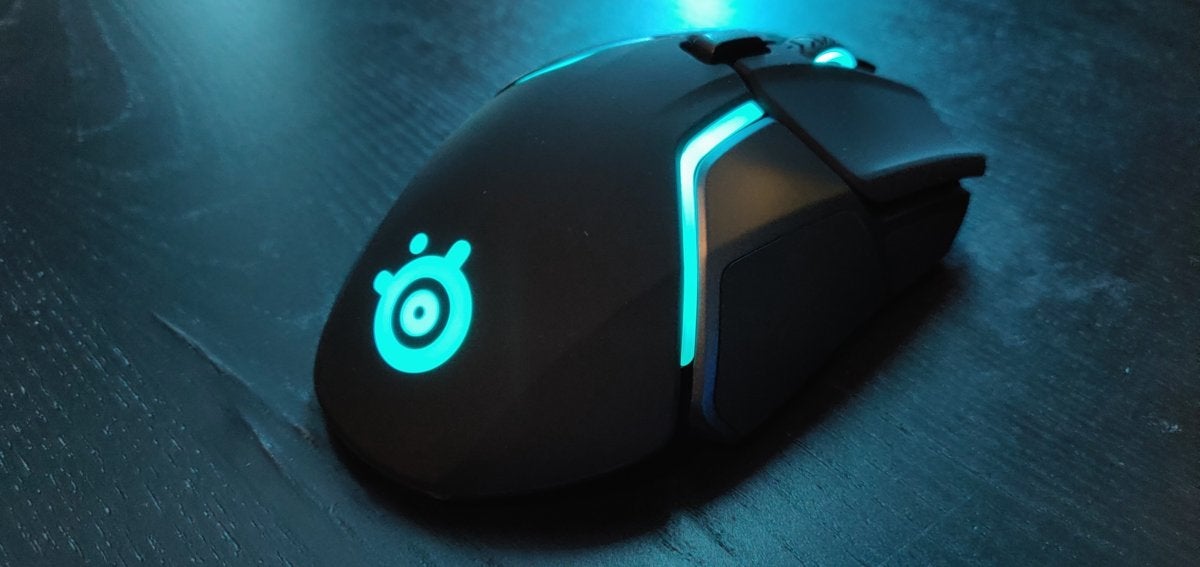 IDG / Hayden Dingman
IDG / Hayden Dingman The Rival 650 is recognizable—which, presented the minor elements in a shiner, is about the highest compliment one can score. Two RGB LED light channels run across the palm rest and past segue into similar lines happening the side of the scroll wheel. Doomed, RGB is functionally useless, only the Rival 650 is credibly the about elegant implementation I've seen since the 2015 Razer Mamba and its across-the-board light ribbon. It's oculus-catching, and a real standout in the SteelSeries lineup.
I love the shape of this mouse, too. SteelSeries leans intemperately on the standard properly-handed scoop shape for just about all its mice, the Rival 650 included. This is the most boffo implementation I've seen from SteelSeries though, mimicking the flanged left and right-hand black eye buttons from Razer's DeathAdder and featuring a gently sloped right bound with heap of way to rest my ring finger and pinky. There are also rubberized pads on the left and perpendicular sides to facilitate picking up the mouse, without organism too prominent.
Speaking of which, the sides peel off. That's not immediately obvious when you look at the Rival 650, but both the left and right panels are attached magnetically, with the palish ribbons demarcating the edges. SteelSeries includes octad removable 4 gram weights with the Competition 650, boasting 256 feasible combinations. The idea is you fundament adjust the mouse's center of gravity by adding, suppose, two weights to the front-liberal side, or unmatched in each of the rear slots.
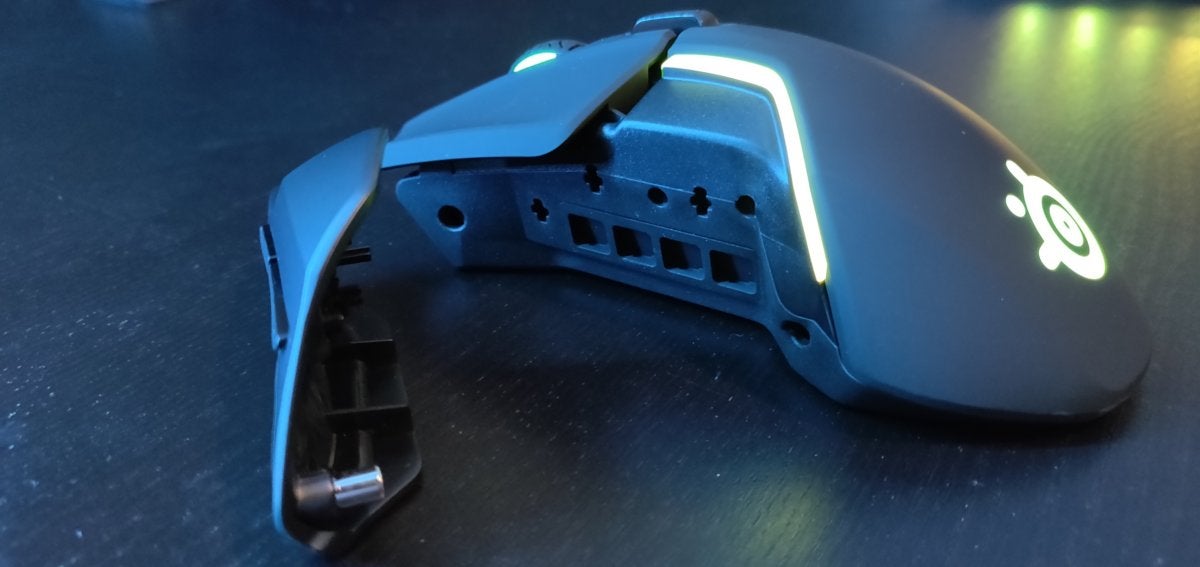 IDG / Hayden Dingman
IDG / Hayden Dingman Whether you'll in reality add weight is debatable. Like Logitech's G502, the Rival 650 carries its weight well—only it is heavy. Even without any weights added, it tips the scales at 121 grams (the same As the G502, actually). That's already more than the magic 100-gram free weight most mice try to target. In full loaded, the Rival 650 comes in at a whopping 153 grams. I like a fat computer mouse, but even for me that's pretty sluggish.
Personally, I've been pouring with the front two slots loaded along each side, tipping the center of gravity towards my fingertips. This allows me to cracking-aim left and satisfactory a bit faster, the unnecessary weight throwing the front end about while the back stays a little more stationary. It's personal preference though, and you could easily spend years experimenting with different combinations if that's of interest.
My only real ailment with the Rival 650's design is, as usual, a button placement. The Competitor 650 is pretty well-worn-standard for 2018, with the customary left-, right-, and central mouse buttons, scroll wheel, and a DPI switcher on top. It does however throw ternary thumb buttons—two placed horizontally the likes of usual, and and so a third stretched vertically towards the front.
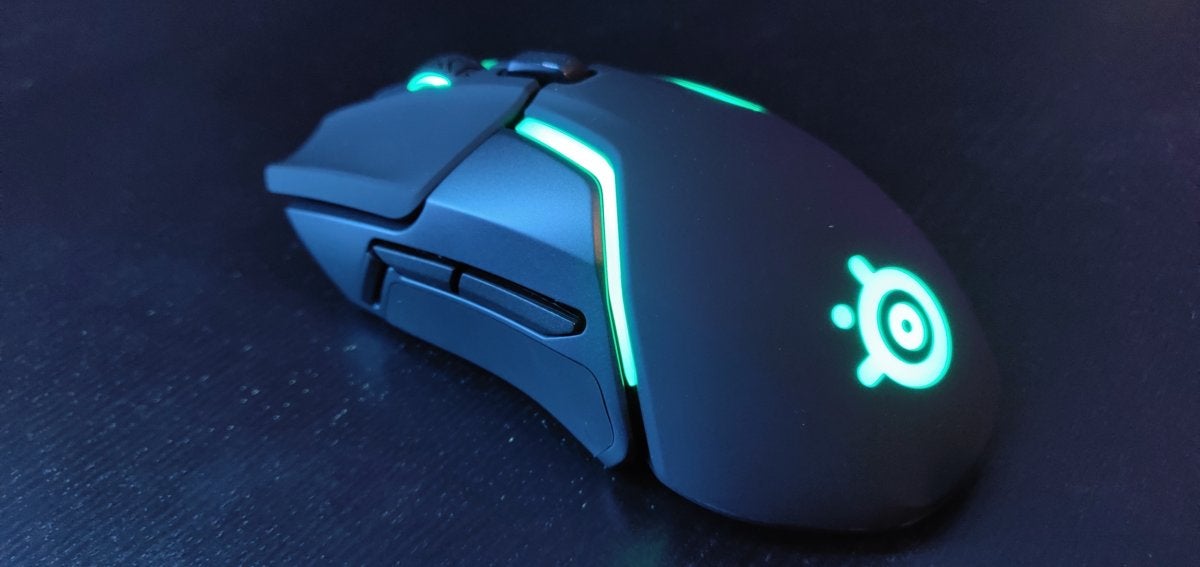 IDG / Hayden Dingman
IDG / Hayden Dingman It's too small, that last unitary. I didn't even notice it at first. It's maybe a half-column inch long, incredibly weedy, and placed so far towards the front end of the mouse that only the most dedicated palm gripper could ever touch it. Even then, information technology's almost inconceivable to save your thumb connected all three ovolo buttons at the corresponding time, rendering its world whole unneeded. Given how much thought went into the thumb panel along the Rival 500, I'm foiled with the Rival 650's.
Charging ahead
Still, it's a great effort from SteelSeries—and made even better past the ironware under the tough. The Rival 650 actually features not fair-and-square one but two gimmicks.
Most importantly, the dual-sensor system. The underived detector on the Rival 650 is the SteelSeries-exclusive TrueMove3, better far-famed American Samoa SteelSeries's variant of the beloved and manufacture-standard PWM3360. That's really every you penury to make love. The TrueMove3 is free of black eye smoothing up to 3,500 DPI, as opposed to the standard 2,000 DPI along the baseline PWM3360—although that's a dispute so small every bit to be unnoticeable to most populate. Seriously, all the various PWM3360 models are great.
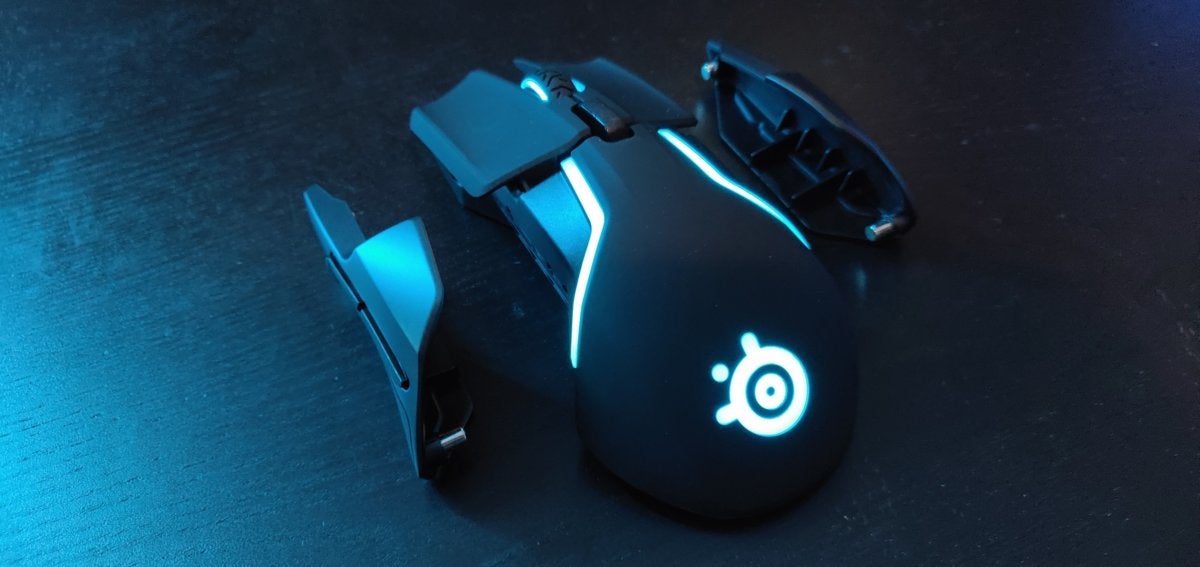 IDG / Hayden Dingman
IDG / Hayden Dingman SteelSeries pairs the TrueMove3 with a indorsement sensing element though, a dedicated depth sensing element. Its problem? To instantaneously regulate when you've lifted the mouse hit the mouse mat and cease input. Most mice fold this into the main sensor, and so the TrueMove3 handles these capabilities on other SteelSeries mice. Merely by including a dedicated sensor, the Rival 650 can detect a liftoff distance as small A half a millimeter—double the sensitiveness of most modern gaming mice, which measure 1 millimeter liftoff.
Again, testament information technology make a huge dispute in your daily living? Probably non. As these numbers pool get smaller and littler the effects become less and little pronounced. It's incredibly precise though, and if you're constantly lifting up and adjusting your mouse you might find that the Rival 650 is a tur better at keeping your aim steady.
The second gimmick will make more of an impact though, I think. Fast charging has finally hit mice, or at least this black eye. I'm honestly jiggered it's affected so long, but the Contende 650 features charging capabilities similar to those found in modern phones. SteelSeries claims that 15 minutes plugged in provides the Equal 650 with 10 (or more) hours of battery life.
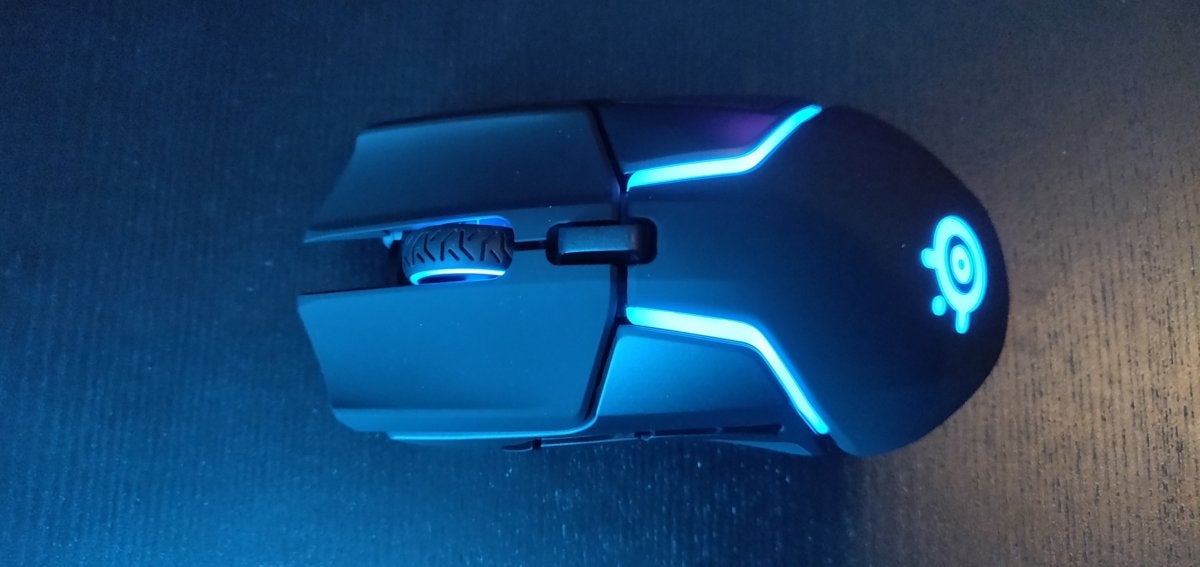 IDG / Hayden Dingman
IDG / Hayden Dingman And in my experience, it whole kit and boodle. The effect is more pronounced if you leave the sneak alone for 15 minutes so it can really suck in power, but even 15 or 20 minutes while allay playing gives you hours and hours of battery once you disconnect again.
We've seen very much of creative solutions to the wireless mouse problem the past few long time—specifically, the "Dead Wireless Mouse" trouble. Logitech's Powerplay is probably the best, trickle-charging the mouse at all times while it's in use thus IT's effectively as reliable as a wired mouse. Powerplay also runs more than $200 though (for mouse and charging pad), which is way to a greater extent than most populate will want to spend.
The Rival 650's smart charging is an excellent alternate for the average consumer. It's non quite as unfailing, and I've still had a few of those "Damn, my black eye is almost dead" moments mid-game. Pulling drink down almost a full day's charge in 15 minutes is incredibly slick though. You're never many than a few minutes of inconvenience away from wireless freedom, which is a fantastic change from the days when I needed to keep my and then-titled wireless mouse blocked sure two or 3 hours to make foreordained it'd last.
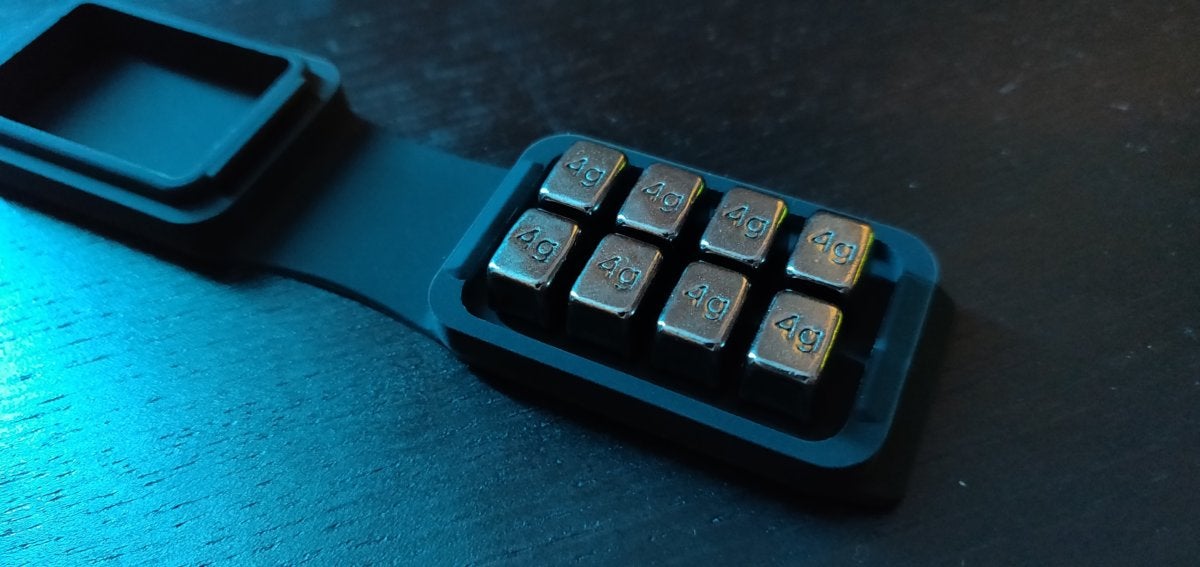 IDG / Hayden Dingman
IDG / Hayden Dingman There's sole unity issue, and I hope SteelSeries buttocks fix it in a firmware update: DPI is tracked individually in wireless and tense modes, for whatever reason. When I plug the mouse in, it straightaway changes my DPI, which can hold fatal results mid-lucifer. Seems like an easy locating, but we'll see.
Bottom line
If you're looking for a radio receiver mouse and Don River't privation to throw Down for Powerplay, I think the SteelSeries Rival 650 is your next best bet. Sure, at $120 it's a bit more than big-ticket than some of the competition, including Razer's 2018 Mamba Radiocommunication refresh—but the instantaneous charging feature alone is worth the extra cash. Add in the weight system, the attractive design, and the comfortable shape and SteelSeries has its first moldiness-have mouse.
Best Prices Today

$100.38
Relieve
Banker's bill: When you purchase something after clicking links in our articles, we may earn a small delegation. Record our affiliate link policy for more inside information.
Hayden writes about games for PCWorld and doubles Eastern Samoa the house physician Zork enthusiast.
Source: https://www.pcworld.com/article/402966/steelseries-rival-650-gaming-mouse-review.html
Posted by: jonessuccart.blogspot.com


0 Response to "SteelSeries Rival 650 review: Solving the wireless-mouse problem with 15-minute charging - jonessuccart"
Post a Comment